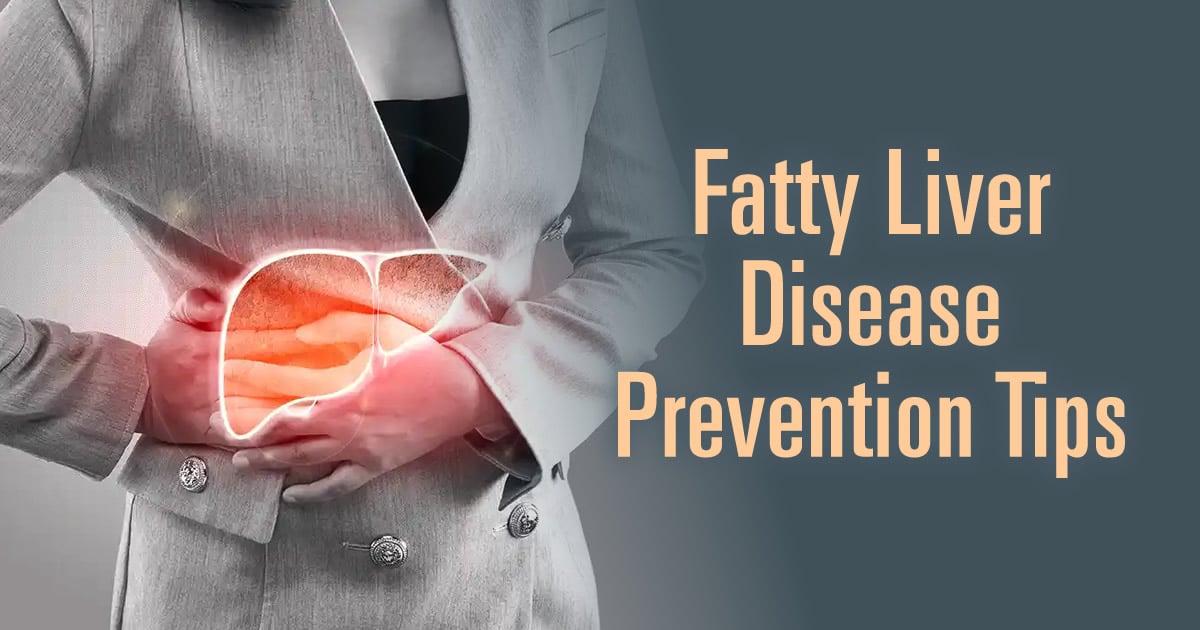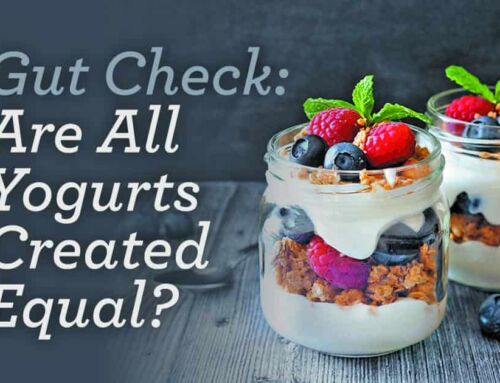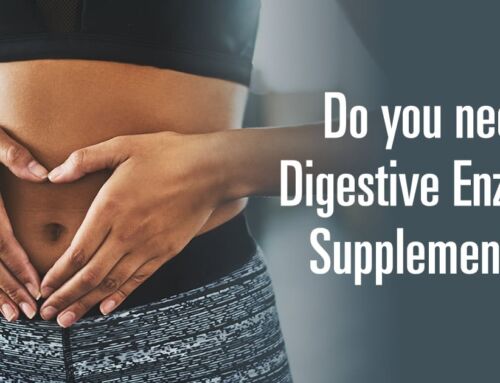Your liver is one of the most important organs in your body and plays a significant role in the digestive system. This large, reddish-brown organ rests beneath your ribcage in your upper right abdominal cavity. It removes toxins from your blood, regulates blood sugar levels and clotting, and makes bile to aid digestion.
Fatty liver disease can impair your liver’s ability to complete these essential functions. In some cases, this can lead to severe health issues. Making lifestyle changes can help prevent fatty liver disease and improve your overall health and well-being.
This article will explain what fatty liver disease is and the risk factors and symptoms you should look out for. We’ll also discuss how a GI doctor can diagnose and treat this condition. Keep reading to learn more about fatty liver disease and how you can reduce your risk.
Fatty Liver Disease Explained
Fatty liver disease is a condition that causes an excess amount of fat to accumulate in the liver. It occurs when your liver cells are unable to break down fat like they normally do. If your liver contains 5% or more of fatty tissue, it becomes unhealthy and can damage your liver cells.
Three Stages
Fatty liver disease has three stages of increasing severity.
- Steatohepatitis: Steatohepatitis occurs when fatty deposits in the liver cause acute inflammation or hepatitis. This enlarges the liver and damages liver cells.
- Fibrosis: This stage of liver disease occurs after repeated or chronic injury to the liver. The liver attempts to repair its damaged cells, resulting in scar tissue formation.
- Cirrhosis: Cirrhosis occurs when scar tissue buildup causes permanent damage. This interferes with the liver’s ability to function properly. Cirrhosis can lead to liver failure and liver transplantation.
Two Forms
There are two forms of fatty liver disease. They have different causes but affect your liver in similar ways.
- Alcoholic Liver Disease: Alcoholic liver disease (ALD) occurs due to excessive alcohol consumption. Your liver can effectively process small amounts of alcohol, but its metabolic functioning becomes impaired with heavy drinking. Over time, too much alcohol use causes liver damage. You can find more information on ALD here.
- Nonalcoholic Fatty Liver Disease: Nonalcoholic fatty liver disease (NAFLD) occurs when fat buildup in the liver is not linked to alcohol use or other potential causes.
This is the most common chronic liver disease in the United States, affecting up to 100 million people. NAFLD doesn’t always lead to liver damage. It progresses to non-alcoholic steatohepatitis (NASH) in around 25% of cases. This article will focus on NAFLD.
Risk Factors for Nonalcoholic Fatty Liver Disease
Fatty liver disease is more likely to occur in people with certain risk factors. NAFLD is associated with conditions such as insulin resistance, obesity, type 2 diabetes, abnormal cholesterol levels, high blood pressure, high blood sugar, and metabolic syndrome. These are also risk factors for heart disease, which is the leading cause of death in people with NAFLD.
Research shows that NAFLD affects up to 75% of people who are overweight and over 90% of people who are obese. What’s more, NAFLD occurs in more than half of people with type 2 diabetes.
NAFLD is also more common in people of certain ethnic groups. Hispanic people, non-Hispanic white people, and Asian Americans experience NAFLD more often than black people. This may explain a genetic predisposition for NAFLD.
Symptoms of Fatty Liver Disease
Fatty liver disease causes no symptoms in many cases. But symptoms can become more apparent as the disease progresses to NASH and later stages.
Symptoms of fatty liver disease may include:
- Fatigue or weakness
- Right upper abdominal pain
- Abdominal swelling
- Lipomatosis or lumps of fatty tumors that grow underneath the skin
- Acanthosis nigricans or skin hyperpigmentation
- Varicose veins
- Jaundice
Fatty Liver Diagnosis
Fatty liver disease is usually asymptomatic. This means it’s often diagnosed during medical examinations for other conditions. Healthcare providers may discover fatty liver disease due to abnormal liver function tests or abdominal imaging tests.
The gold standard test for diagnosing fatty liver disease is a liver biopsy. This test generally involves using a needle to remove small tissue samples from the liver. The biopsied tissue then undergoes laboratory examination to determine the severity of the liver disease.
Other testing options for fatty liver disease include:
- Blood tests. Liver function tests can measure substances that your liver produces to check if it’s functioning correctly. High levels of alanine transaminase (ALT) and aspartate aminotransferase (AST) in your blood indicate a potential liver injury.
- Elastography. This test measures the elasticity of the liver using a special device called the Fibroscan. Liver tissue with reduced elasticity and increased stiffness indicates scarring from fibrosis.
- Imaging tests. Ultrasounds, CT scans, and MRIs can help diagnose fatty liver disease by creating pictures of the liver and surrounding organs. Imaging tests can detect signs of fibrosis and cirrhosis, such as liver enlargement and atrophy.
How to Prevent Fatty Liver Disease
You can prevent fatty liver disease by treating its modifiable risk factors. Managing high blood pressure, high blood sugar, visceral fat, insulin resistance, and abnormal cholesterol levels by making lifestyle changes can reduce your risk of fatty liver disease.
The following tips can help you lose weight and form healthier habits to improve your health:
- Make exercise a part of your daily routine. Getting regular physical activity can help you maintain a healthy weight. It also improves insulin sensitivity, aids digestion, and lowers high blood pressure. Exercise can be as simple as walking more throughout your day. Try to work up to 10,000 steps daily.
- Track what you eat. To lose excess body fat, you need to burn more calories than you take in. Eating intuitively or opting for smaller portions can help you avoid overeating. Counting your calories with a nutrition tracking app can give you insight into the calories and nutrients you’re consuming.
- Add more fiber to your diet. Foods high in fiber, such as fruit, beans, cruciferous vegetables, and whole grains, make you feel fuller for longer. They also support your gut microbiome and digestion.
- Replace saturated fats with unsaturated fats. Consuming omega-3 and omega-6 fatty acids can lower inflammation and improve your heart health. Good sources of healthy fats are fish, flaxseeds, chia seeds, walnuts, avocados, and green leafy vegetables.
- Avoid processed foods and drinks high in fructose. Consuming soft drinks, juices, and other processed foods can raise your blood sugar levels. What’s more, these foods are often higher in calories. Cutting out liquid calories and opting for more whole foods and gut-friendly snacks can help you lose weight.
• Quit unhealthy habits like smoking and drinking alcohol. If you still want to drink, limit your alcohol intake to 1-2 drinks. Both of these behaviors increase your risk of fatty liver disease.
A GI Doctor Can Help Treat Fatty Liver Disease
Fatty liver disease is a common condition that causes your liver to store excess fat. While most people with NAFLD don’t have symptoms, it can lead to health problems if left unchecked.
A GI doctor can diagnose fatty liver disease and determine the severity of injury. In many cases, your doctor can help you reverse its harmful effects. But fatty liver disease that progresses to cirrhosis often causes irreparable damage.
Losing weight and eating a diet rich in plant-based foods and healthy fats can reverse early-stage fatty liver disease. Reducing your body weight by up to 10% can lower fat buildup in the liver and heal inflammation and fibrosis. If you feel overwhelmed with making changes, your GI doctor can refer you to a nutritionist to help with the transition to a healthier lifestyle.
If you’re struggling with your digestive health, seeing a GI doctor can help manage your condition and prevent future health complications. You can request an appointment online or call our office at 210-615-8308.




